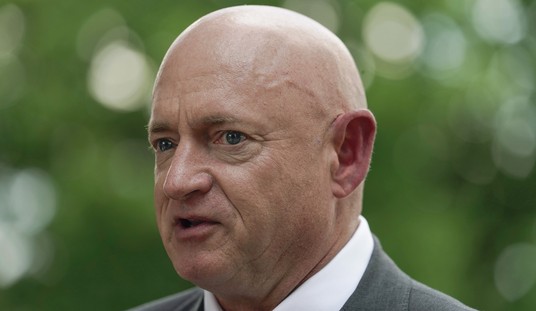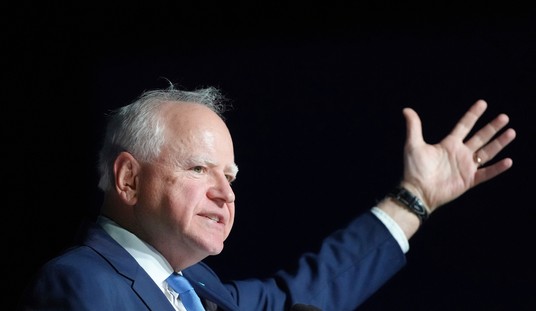I spent much of my professional life in radio. One of the great things about being at a smaller station is that programmers are pretty much given a free hand, so long as they don't blatantly violate Broadcast Standards and Practices. That allowed me to create a killer talk lineup that consisted at times of Rush Limbaugh, Dr. Laura, Sean Hannity, Bruce Williams, Phil Hendrie, and, of course, the great Art Bell. And I got to design and create local programming that included my own show. I was also tasked with hiring broadcast staff, including board operators and reporters.
At the time, Utah was still mostly white in terms of demographics. And since I lived out in the sticks, my town was even whiter than the rest of the state. But we did everything we could to hire minorities not because we wanted to hit a racial quota but because we honestly wanted to give members of those groups a chance.
In this case, the biggest minority group in the area at the time was the local Indian tribe. We reached out to the tribe, and we recruited members who we knew had certain skill sets, areas of expertise, or passions. As it turned out, tribal members were not particularly interested in working for us. You can't make someone take a job they do not want, but we offered.
I don't know if that excuse wouldn't fly in this day and age in the wake of the FCC's decision to reinstate a rule requiring broadcasters to file Form 395-B every year. This is a list of the race and gender of all of their employees. In addition to adding to the records and paperwork broadcasters must keep and file, this adds yet another layer of regulation that will need to be navigated to keep from running afoul of the Commission.
Television and radio are two different animals. When I got out of the radio business, the trend was running toward more automation. Your favorite disc jockey might be broadcasting via satellite from a studio in Dallas, hundreds of miles away from your town. Or your local jock may hit the studio for an hour of "voice tracking." His or her comments, jokes, and jabberings are inserted in between songs and commercial breaks for a show that might air the following day.
Once upon a time, we needed a person to play the breaks during Limbaugh's show. Now everything is controlled via computer. Unless a station is devoted to maintaining a local presence, it may not require many people, if any, for on-air talent or even local news. You could run a station with a traffic and continuity manager, a couple of salespeople, a good internet connection and a reliable computer system. Radio stations don't need to hire nearly as many people as they did in the past, so if a job needs to be filled, owners and managers may be forced to consider race and sex first and qualifications second.
Television requires much more in terms of personnel, and those stations may be under even greater pressure to comply with the rule. Although I suspect they will be happy to do so.
The pressure will be on to hire minorities and women, not because they are qualified for the job but because of their sex or background. Don't get me wrong, I have met many women and minorities who were talented broadcasters, writers, salespeople, producers, and technicians.
But the hiring focus could shift to sex and color and away from talent and experience. Why? Because no company wants a fine, a warning, or a suspension for not complying with a federal mandate. The mere threat can be enough to make some broadcasters break out in a cold sweat.
FCC Commissioner Brendan Carr seems to agree. He was one of the dissenters in the recent 3-2 vote to reinstate the rule.
The FCC just ordered every broadcaster to start posting a race & gender scorecard that breaks down the demographics of their workforce.
— Brendan Carr (@BrendanCarrFCC) February 22, 2024
Activists lobbied for this b/c they want to see businesses pressured into hiring people based on their race & gender.
Courts have already… pic.twitter.com/4Mvb2sLMKj
In his dissenting opinion, Carr writes:
In particular, in the second part of today’s Order, the FCC decides that it will take the Form 395- B demographic data and publish it on a station-by-station basis—meaning that the FCC will now post a race and gender scorecard for each and every TV and radio broadcast station in the country. In doing so, the FCC caves to the demands of activist groups that have worked for years and across different industries to persuade the federal government to obtain—and most importantly, publish—this type of data about individual businesses. This is no benign disclosure regime. The record makes clear that the FCC is choosing to publish these scorecards for one and only one reason: to ensure that individual businesses are targeted and pressured into making decisions based on race and gender.
In addition to facing sanctions from the FCC, a station would be publicly outed for its allegedly "racist" hiring practices. Once an entity is outed as racist, the details no longer matter. Penance must be done, and compensation must be given. This is about the federal government advancing an agenda and reminding broadcasters just who is in charge. The FCC is doing this because it can.
Most TV stations are already "in the tank" in terms of the Left's agenda. And radio stations that program music or are NPR affiliates will likely be on board. Actually, NPR is a given, so never mind them. But smaller operations that may not have seven or eight stations under one roof may feel the heat, particularly if they offer a talk radio format.
One should not be surprised if the FCC has more rules waiting for their debuts. The reinstated rule is a reminder to broadcasters to watch their step. And with George Soros set to take over Audacy, the trajectory of the First Amendment may be about to take a whole new turn.










Join the conversation as a VIP Member